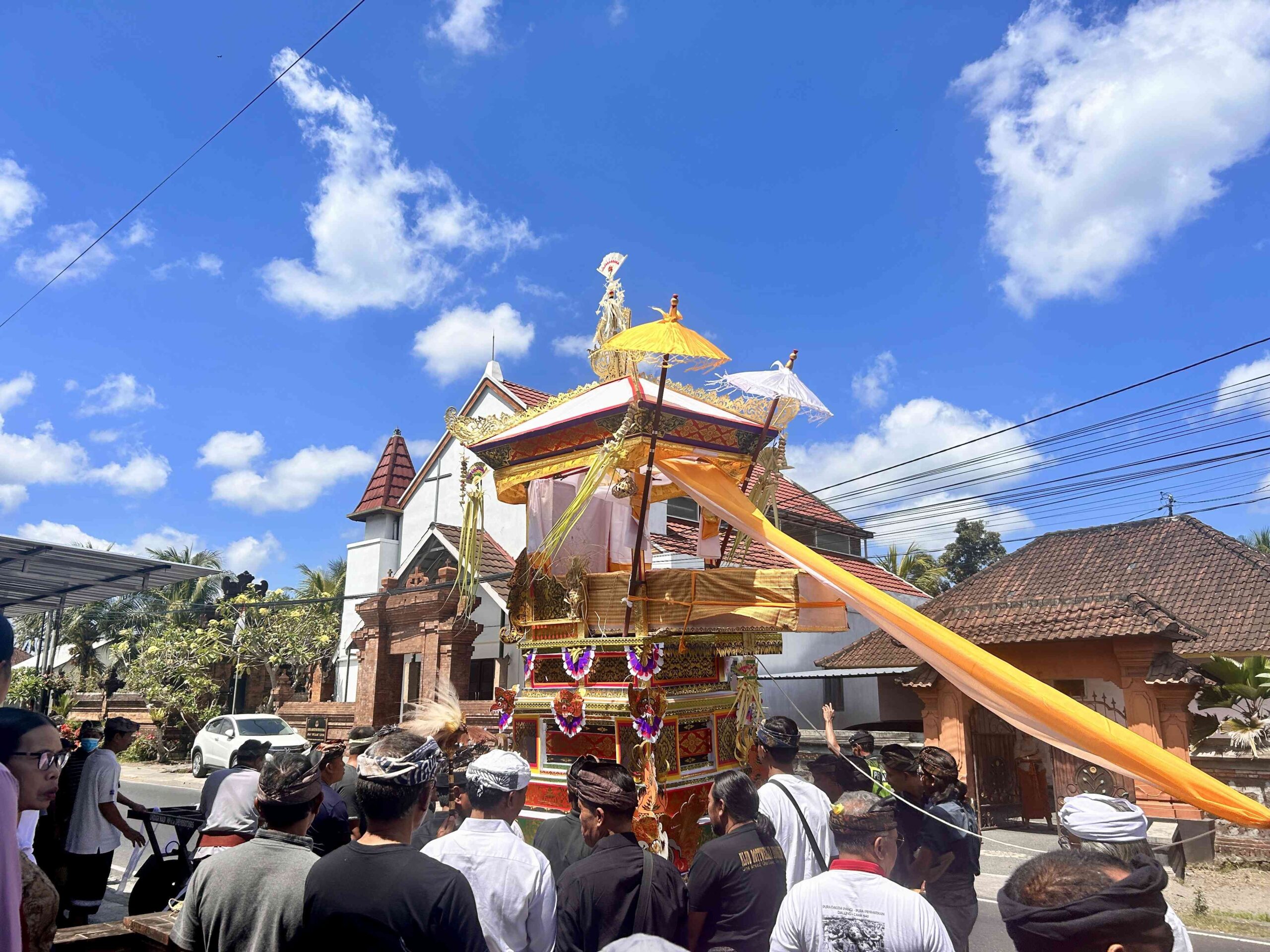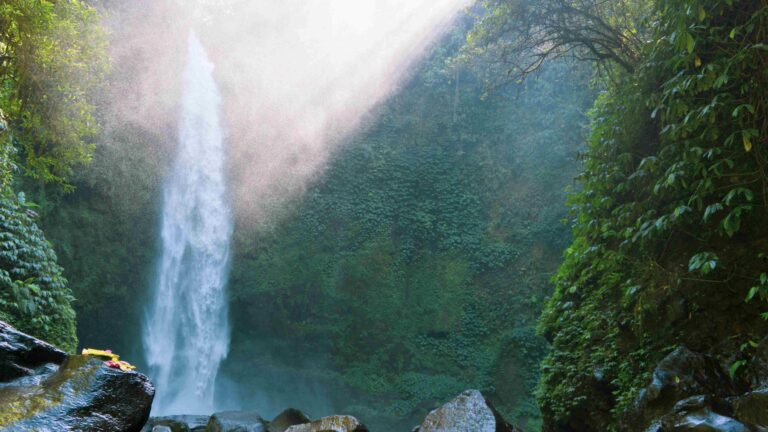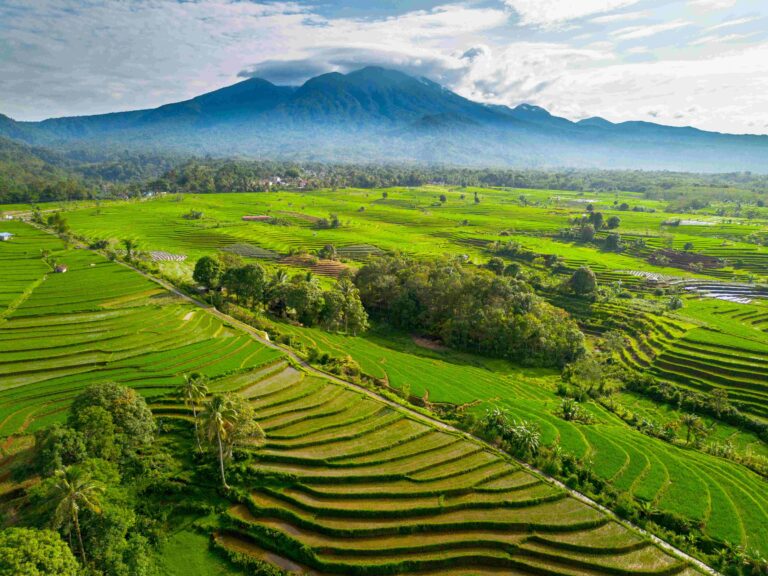Death and the transition of the physical body and soul from the living world into the afterlife are celebrated with a special ceremony in Bali.
While visiting Bali, you may be invited to attend their unique Ngaben cremation ceremony to witness the details of the ritual and learn more about this beautiful spiritual culture.
We are here to introduce you to the meaning, the stages, and the rules of the ritual.
What is Ngaben in Bali?
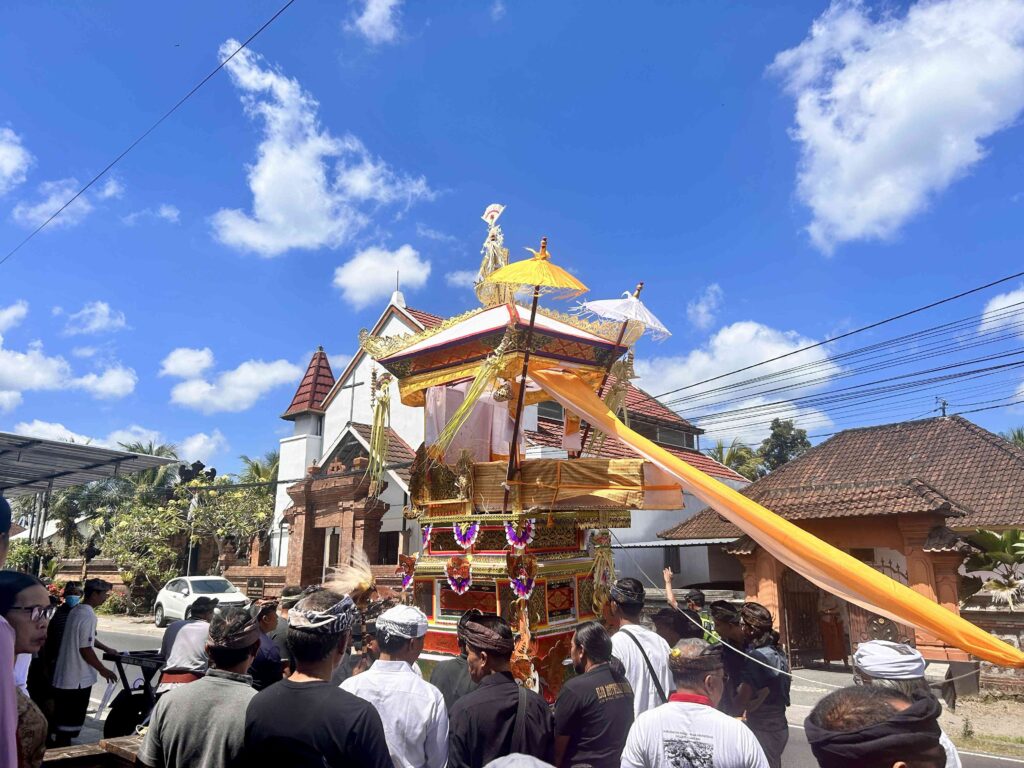
Ngaben aka Pretiwaan (for high priests) or Pelebon (for royal family) is a death celebration, a cremation ritual performed by Balinese-Hindu.
They do not usually bury their dead as Westerners and other parts of Indonesia do, they cremate the corpses.
The ritual includes a few days of preparation and a procession where the family members and helpers carry the body hidden in a wooden tower bade to the cremation site, where it will burn in an animal-shaped coffin.
What is the tradition of death in Bali?
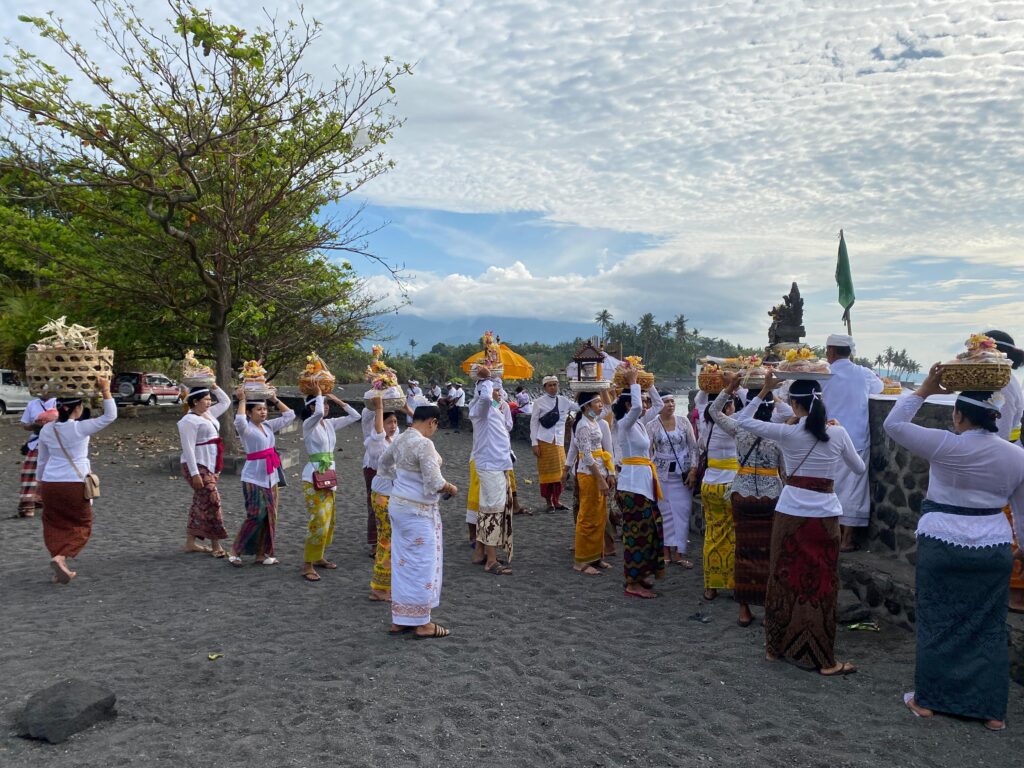
Balinese culture believes in good and evil spirits, reincarnation, and the lower and upper realms.
The soul Atma can reach heaven, reunite with God, and be reborn or become free.
Our physical body means little for Hindu-Balinese, it is just a temporary vessel for the soul made of 5 elements: earth, fire, air, water, and ether. Once we die, all elements return to nature.
Not every soul reaches God. Based on how people lived their lives, the journey may lead to hell Neraka, heaven, Surga, or God Moksa.
On an auspicious day, the family performs the traditional Ngaben ceremony to help the soul of the deceased break its attachment to the earth and reach its destination before evil spirit gets to it.
Ngaben Bali Cremation Ceremony Steps & Process
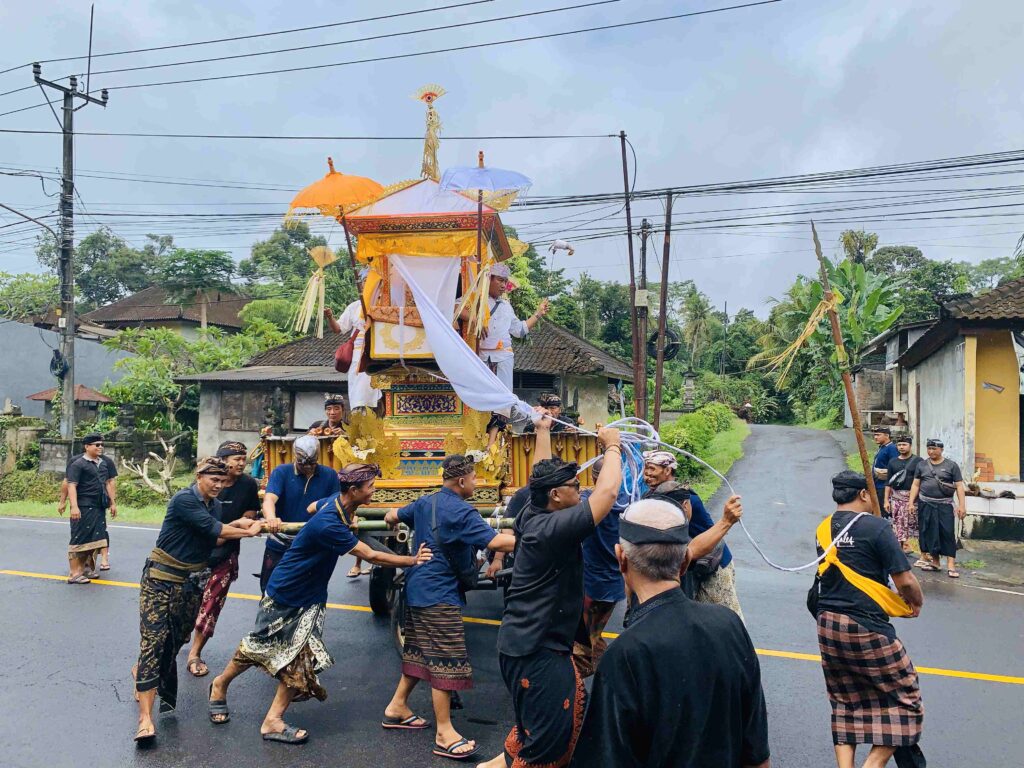
Preparation
The day of the funeral is not arbitrary. The family and high priest pick the most appropriate date according to the Balinese calendar.
Every member of the village banjar (council) has to contribute something: coconuts, bamboo, rice, etc.
Women prepare the offerings and plan the food, which can take weeks and thousands of plants and flowers, meanwhile, male neighbours help to build the Patulangan and Bade.
Patulangan – Animal-shaped coffin made of wood, paper mache and gold leaf and mounted on a platform.
The most commonly used animals are bull or ox for men and male high priests, and cow for women.
In rare cases today you can see a mythical animal, or a lion, deer, or even an elephant. The gender and the status of the dead determine what animal can be used.
The body will be cremated in Patulangan (a wooden sarcophagus).
Badé or Wadah looks like a tower with many levels of roofs representing elements of the Balinese Hindu universe.
The underworld is usually depicted with a dragon and a turtle at the bottom, man’s world with mountains and forests, and at the top – the upper realm is represented with Meru.
The number of roofs is always odd and tells us about the status and wealth of the family. It can be up to 11 roofs which represents the highest class. A single-roof tower symbolizes an ordinary person or an outsider.
It is used to carry the body to the cremation site.
Ngaben Ceremony Day
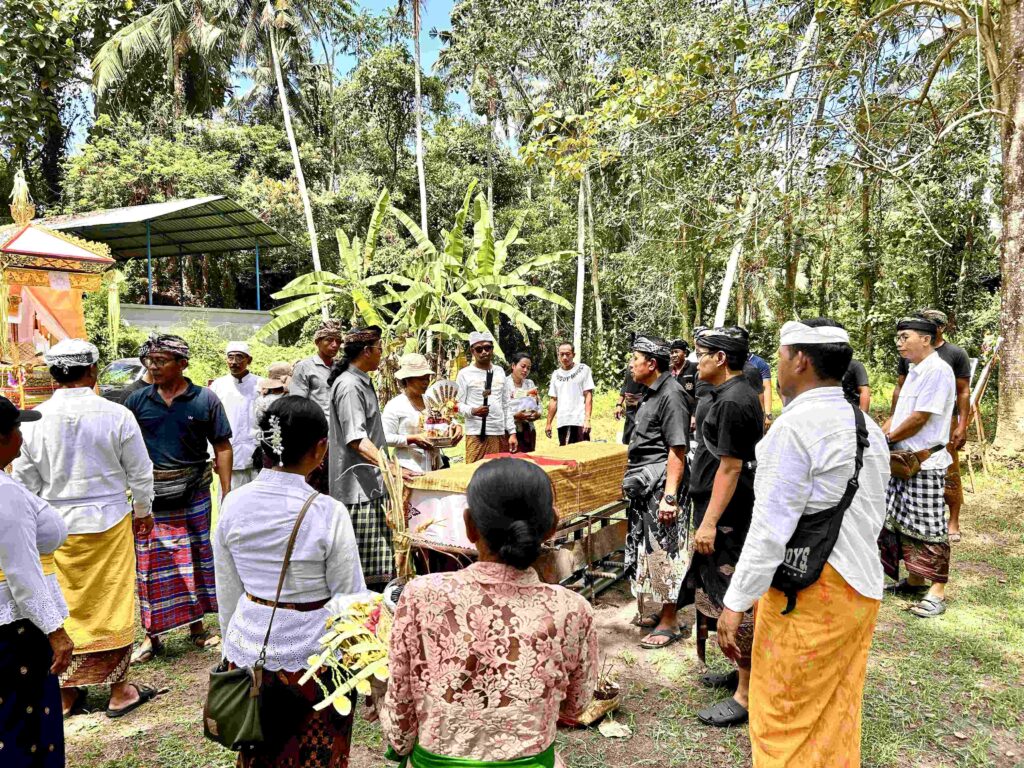
Friends and extended family come from all over the island to celebrate life and the departure of the deceased. Everyone is wearing traditional Balinese kebayas.
The family performs the Memukur cleansing ritual – washes the corpse using holy water, dresses it in Balinese attire, and wraps it with white fabric. A clean body can be decorated with flowers, leaves, and gold.
Then, family and close friends can approach the body, and say prayers and their goodbyes.
Ngaben Cremation Ceremony Procession
The tower is placed on a bamboo platform that will allow villagers to carry it on their shoulders.
A long white cloth lancingan is attached to the top of the tower and falls down on the people carrying it. It symbolizes the attachment of the dead to his or her family.
The parade starts at the family compound.
First goes a young man who carries the ceremonial dagger Kris holding some magic powers.
Then, follow the designated mourners carrying the tower with the body and memorial rites through the village to the cremation ground Kuburan. Another group carries the empty sarcophagus.
Each time they arrive at a crossroad they will rotate the tower a minimum of three times to confuse evil spirits Bhuta and Leyak who are trying to take the soul to the lower world.
They are followed by musicians playing battle music beleganjur on traditional gamelan instruments and singing.
In Bali, the funeral music is believed to protect the passed from the bad spirits: it forms a sonic shield around the tower and attacks the evil spirits.
Then follow women carrying beautiful bowls with offerings on their heads, and mourning family members.
Friends, villagers, and curious people passing by are welcome to join the procession at the back.
Cremation Ceremony – Final Step

Once the procession reaches the cremation ground, the priest reads and chants mantras and blesses the sarcophagus with holy water.
The body is transferred from the tower to the coffin.
The men use blessed torches to set the structure with the body on fire.
Everything else is also burnt separately.
After The Ceremony – Nganyut
Immediately after or 12 days later, the ashes are placed in a coconut shell, wrapped into a white cloth, and released into the nearest sea, river, or ocean with offering and incense while the priest chants mantras that will guide the soul towards the Upper world.
This symbolizes the return of the soul back to the universe.
How much does a cremation cost in Bali?

The cost of a cremation ceremony includes building the cremation tower and coffin, food, offerings, musicians and priest services. It can cost from 2,000 to 30,000 USD (2,900 to 44,500 AUD).
A quick cremation ceremony carried individually, right after death, is more expensive.
Ordinary people can wait until communal funeral ceremonies (Ngaben Ngirim) happen to share the cost. Meanwhile, they have to find or borrow money.
For the time being, they temporarily bury the body. In some cases, the bodies stay buried for years, because families are not able to save enough money.
What is the cremation festival in Bali?
Festive Ngaben Cremation ceremonies attract locals and tourists from all over Bali.
Royal family members and high priests in Ubud or Denpasar have the largest gatherings and most exquisite ceremonial burial towers, up to 20 meters tall.
You can always search online for the upcoming royal or priest cremation ceremonies or ask local friends.
What do you wear to a Balinese funeral?

If you plan to join the parade or you’ve been invited by a local family to join the Ngaben ritual, dress appropriately.
For women – cover your shoulders and knees, and wear a traditional kebaya (shirt, sarong, and belt sash). For men, wear a sarong, sash, and the traditional headpiece udeng.
Final Thoughts
Joining the celebration of death in Bali, Indonesia can be a one-in-a-lifetime spiritual experience offering a glimpse into a different culture and ancient rituals.
If you were invited, follow the family rules respectfully and use our bits of knowledge to better understand what’s happening around you.
We highly suggest you bring a water bottle, as the ceremony can take the whole day, and ask permission to take photos or videos.
Read more:
Balinese Culture: What Makes The Island And The Balinese People So Unique?
Understanding The Balinese Caste System: The Four Castes Of Bali

